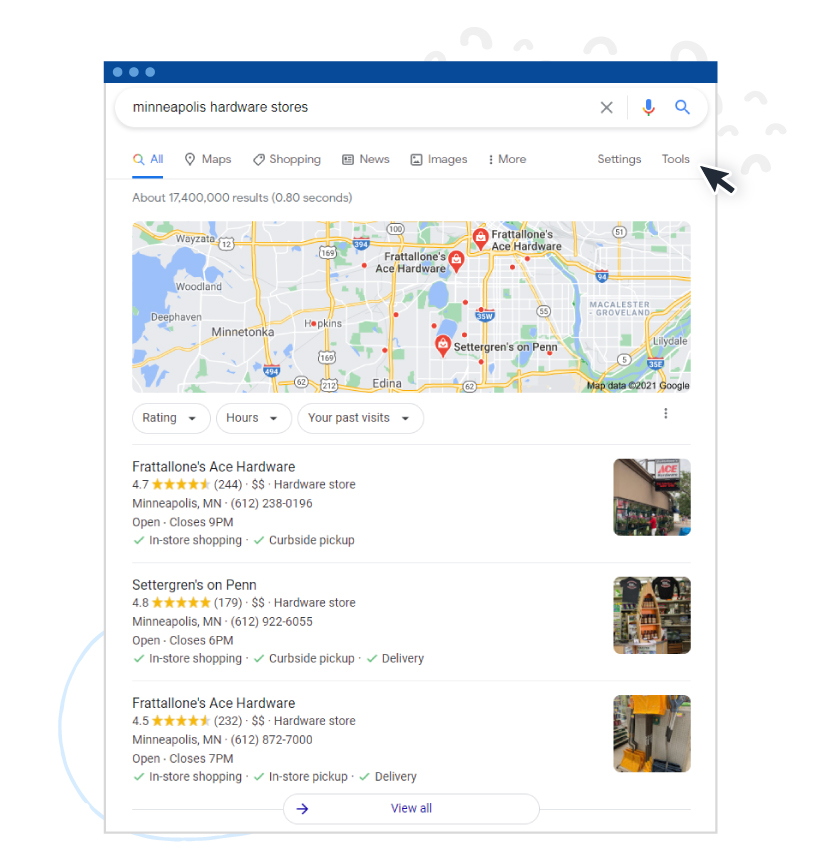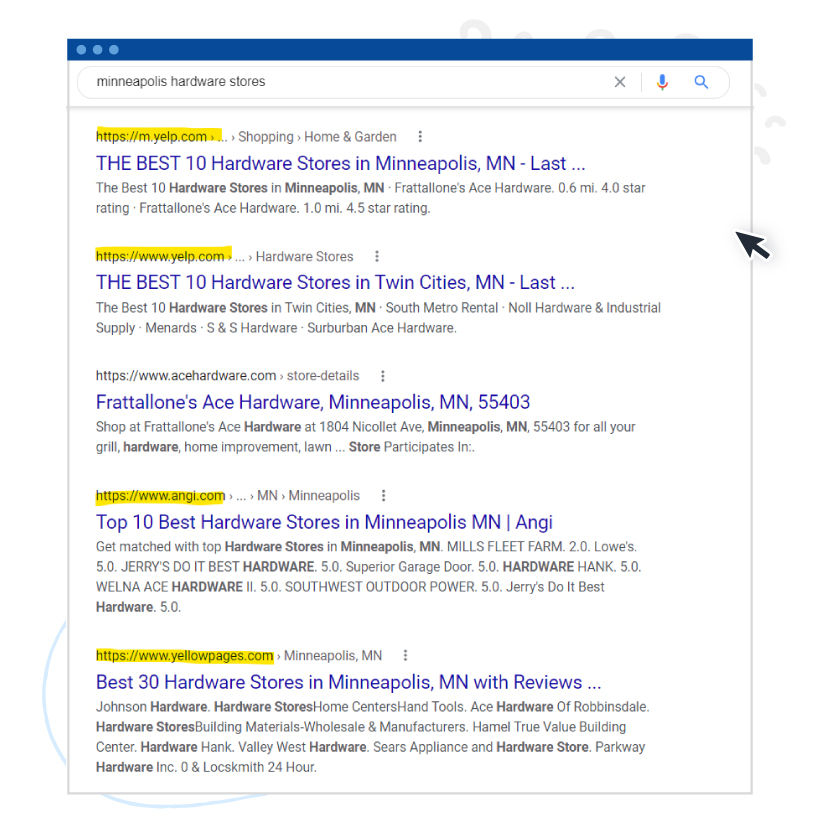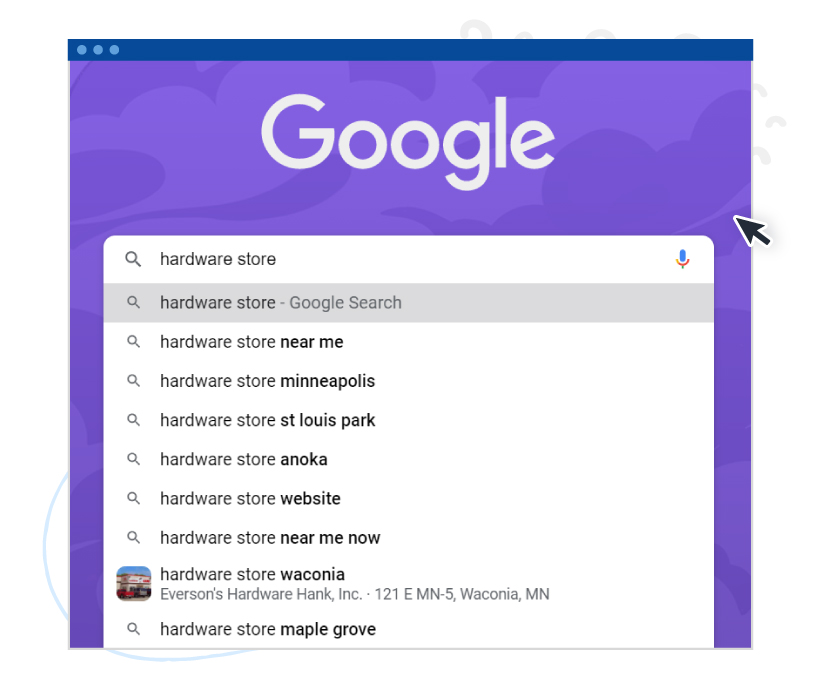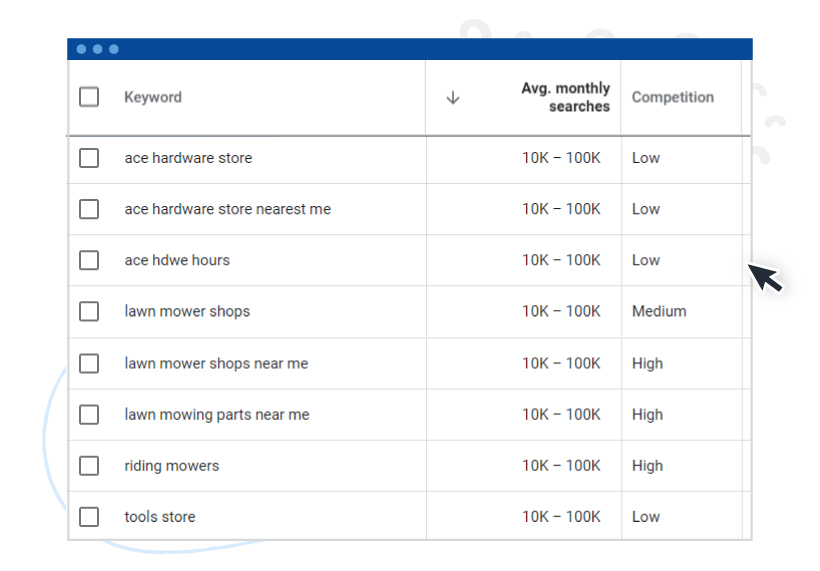If you’re a local business, it’s clear in order to be found on Google, that you need to have positive reviews to thrive.
Ranking on Google as a local business requires a local SEO strategy. Some tactics overlap with regular, non-local SEO, but most of them are unique to businesses targeting other local businesses or local consumers.
Within those sets of local SEO tactics, there are differences between a business targeting one market and enterprise businesses in multiple markets/locations.
A local SEO strategy for a business in one market
There are nuances to local SEO for different types and sizes of local businesses. Let’s take a look at how to approach each aspect when you’re in one market with the local SEO strategy below.
Google My Business
Google My Business is your number one priority; it’s an absolutely essential part of your local SEO strategy. If your competitors have great, available Google My Business profiles while you don’t, you’ll lose business. Period
When you perform a search with local intent, you’re likely to see what’s called the map pack at the top of the result:
These three highly coveted spots are only available to those who have an updated Google My Business profile. In fact, Moz found an updated profile is the number one ranking factor for the map pack.
For the best chance of ranking in the map pack, you must update everything in your profile! This includes:
- Name & contact information
- Business categories
- Website
- Hours
- Products
- Services
- Attributes
- Business description (“From the business” section)
- Opening date
- Photos/videos
- Reviews (respond to what’s there, work on getting more)
Take your time and fill out everything you possibly can. However, this doesn’t guarantee you’ll get a spot in the map pack, but it’s the first step in giving you the best possible chance.
Now, what about posts? Yep, you can create post updates in Google My Business, similar to social media. Posts contain an image and a link to your website, highlight products or events, and more.
While these won’t help you rank higher, they will give searchers more content to interact with when they find you in search results.
Since you’re in one market, you can really focus on optimizing for your specific location. Make sure to include local keywords anywhere possible.
NAP (Name, Address, Phone) listings & citations
NAP consistency is another key component of a local SEO strategy. Google wants to be sure they’re serving up accurate results to searchers looking for local businesses.
So, a business with a lot of consistent mentions of its name, address, and phone number is more likely to rank well than one with just a couple or one with an old address scattered around on multiple listing sites.
According to the Moz Local Ranking Factors survey, NAP signals (number of listings and consistency) are the 5th most important local ranking signal for both the map pack and the organic rankings below it.
Where are NAP listings and citations found for businesses in one market? Here are a few examples:
- Social media profiles
- Yelp
- BBB
- Industry-specific review sites (HomeAdvisor, Houzz, Healthgrades, Tripadvisor)
- Local listing sites (yp.com, MapQuest, Superpages, local.com)
- Local tourism websites
Not sure which industry-specific review sites are the most important for your business? Run a few Google searches for your optimal high-ranking keywords. What industry-specific listing sites are on the first page of results, under the map pack?
Assuring NAP consistency can feel like a very daunting task because how the heck do you find all your business’s listings? Well, if you want some help, there are a plethora of tools available for this task.
Try Whitespark or BrightLocal, or run a search for “local citation tools” to find a host of options. Some of these tools can also help you find more listing opportunities by analyzing your competitors.
Reviews & ratings
You’ve heard it before, and you’ll hear it again: You must have good reviews and a volume of them. Going back to Moz’s survey, review signals are number three on the list of ranking factors for the map pack and matter greatly for everything business-related.
Even if you manage to make it to the coveted map pack, if you have some poor reviews and ratings, potential customers or clients will often choose a competitor instead.
According to BrightLocal, 87% of consumers read online reviews for local businesses, and negative reviews make 92% of consumers less likely to use the business. Only 48% of consumers would consider using a business with fewer than four stars. In short, reviews are HUGE.
Businesses in one market can be focused on appearing as trustworthy and experienced as possible in that one market. If your reviews will contain some location keywords, and you can focus on those location keywords on your website.
A few review best practices:
- Prioritize Google My Business reviews to get a great overall star rating. Once that’s set, you can focus on your next most important review site, but don’t leave Google My Business hanging while you do that.
- Perfect your art of asking for reviews. Have a set process for getting new ones.
- Respond publicly to every review you get, if possible. Negative reviews should be responded to with restraint and (usually) a “customer is always right” mindset.
- Use great reviews to your advantage by posting them on social media, in email campaigns, or on your website.
Keywords
While getting into the map pack is a big priority, being listed in the organic listings underneath is a huge plus too. It’s not likely to send you as much traffic as being in the map pack would, but it’s still a good place to be.
A part of your local SEO strategy should be optimizing your website and local listings with the right keywords. This is incredibly important for reaching your local search ranking goals.
There are many ways to perform keyword research, but let’s look briefly at a tried-and-true keyword research and optimization strategy for local businesses in one market.
Step one: Write down the top keywords you want to rank for in a spreadsheet.
Step two: Open Google, start typing in one keyword at a time, and gather some intel/ideas/suggestions from the dropdown while you’re typing. Record any standouts on your spreadsheet to keep in mind.
Step Three: Try a few keyword generation tools like Keyword Planner, but you can’t access it unless you have a Google Ads account. You can go through account setup and just pause/cancel right away if you want to access the tool without running a campaign.
If you have access, click their “Discover New Keywords” button, then toggle over to “Start with a website.” You’ll be provided with a lot of great keyword ideas:
Other options for free keyword research tools include WordStream’s Free Keyword Tool, Wordtracker, or Ahrefs’s Keyword Generator.
According to Moz, on-page SEO signals are the second top-ranking signal for organic rankings and fourth overall for the map pack. Whew, important stuff!
Work on optimizing your website for your bread-and-butter keywords, and take your newfound ones into consideration. Are there lots of searches for your service in a nearby suburb or city that you service?
It might be time to create a page on your website just for that location. Of course, make sure any location pages have unique content — do NOT copy/paste content and just change the location words.
Backlinks
Backlinks are important for any business’s local SEO strategy. According to the Moz Local Ranking Factors survey, link signals are the second most important ranking factor for BOTH the map pack and the organic results.
You must continuously work on having a great backlink profile in order to compete. Period.
There are a lot of backlink-building tactics that work well for both local and non-local business, but here are a couple of the ones that are perfect for local businesses in one market:
- Local tourism website listings
- Sponsoring local teams or events
- Belonging to the Chamber of Commerce for a link on their website
- Media coverage
- Guest blogging for/collaborating with other local businesses
Social media
Social media has been a contested ranking factor for a long time. While social media is not a direct SEO ranking factor, it indirectly affects (and improves) your SEO.
In short: Your business should have it and use it as part of your local SEO strategy. Getting a bunch of likes and shares can improve your brand awareness and improve your backlink profile when others find and share your content on their websites.
Plus, sending extra traffic to your content via social can show Google that your content is worthy.
To get the most out of social media as a business in one market, here are a few best practices and ideas for how to use it to your advantage:
- Have a presence on all the big networks, but focus your energy on the couple that makes the most sense for your unique business. Where are you going to see the most interaction?
- Build community. You’re in one market, so build up that hyper-local community! Share information that’s ultra-relevant to your audience and the local area.
- Try spending a little budget to expand your social presence, if it’s doable. Social media can be SO rich for local businesses in one market. Consult a social media expert here.
- Research and use the heck out of your hashtags! They can be a big way that new people find your page.
- Use social media to distribute deals and specials. These posts tend to do well with a following.
Content
Content is a key component of a local SEO strategy. Content is how you create those local ranking opportunities in the organic results, it’s how you make your site relevant to search engines, it’s how you invite interaction on social media, and more.
Content for local, one-market SEO is a little bit different than content for, say, a nationwide brand, but it’s still just as important. In order to focus on your local niche, you’ll want to create relevant content for both your business and your community.
This sounds difficult, but in reality, it’s a lot of using your common sense and brainstorming skills to come up with topics your local community would be interested in.
For example, you’re a local florist. You have a brick-and-mortar shop in Minneapolis, MN, and you provide delivery and floral services to the twin cities. Some great local-focused content ideas:
- Best annuals to plant in MN flower beds in the spring
- Trending wedding bouquets in MN
- Best hardy bushes to grow in MN
- A guide to creating awesome arrangements with MN-grown flowers
There are tools to help with your content-creating mission. To generate local content ideas (for free), try some of these tools:
- Good old-fashioned competitor watching. Visit their websites and check out what great content they’re generating, and gather ideas of your own! Of course, never straight-up copy.
- Answer the Public
- TextOptimizer
- HubSpot’s Blog Ideas Generator
- Ubersuggest
Need help creating a content strategy that targets local customers with blog posts, social media posts, and more? Talk to a content specialist at ClearVoice today.








